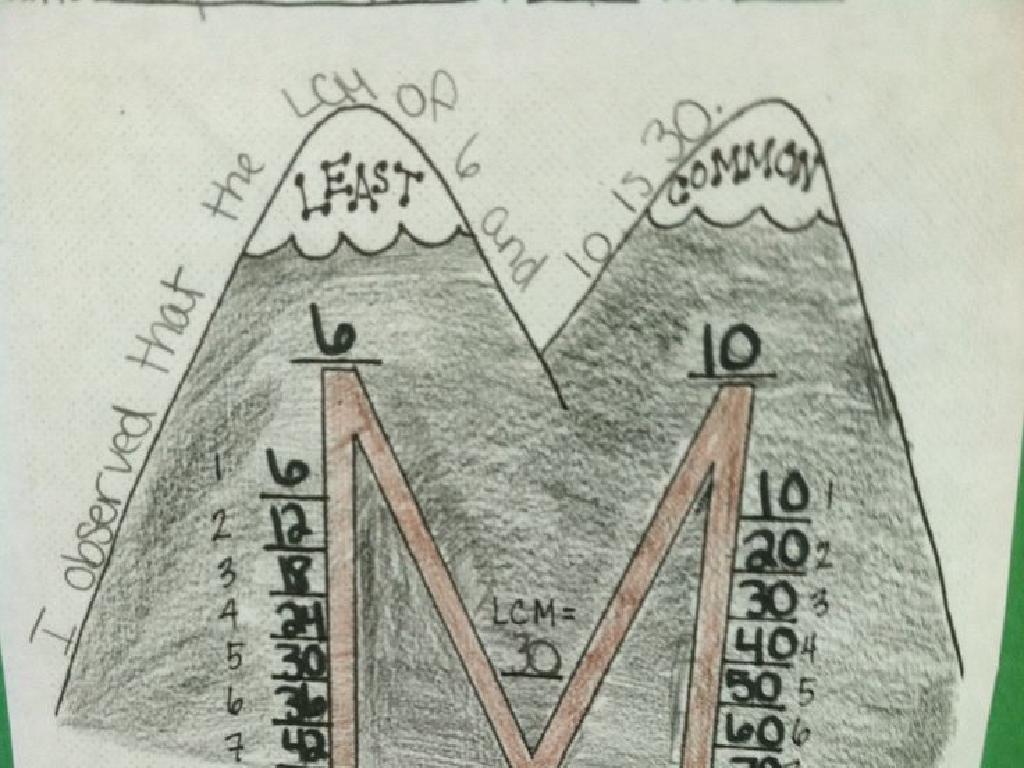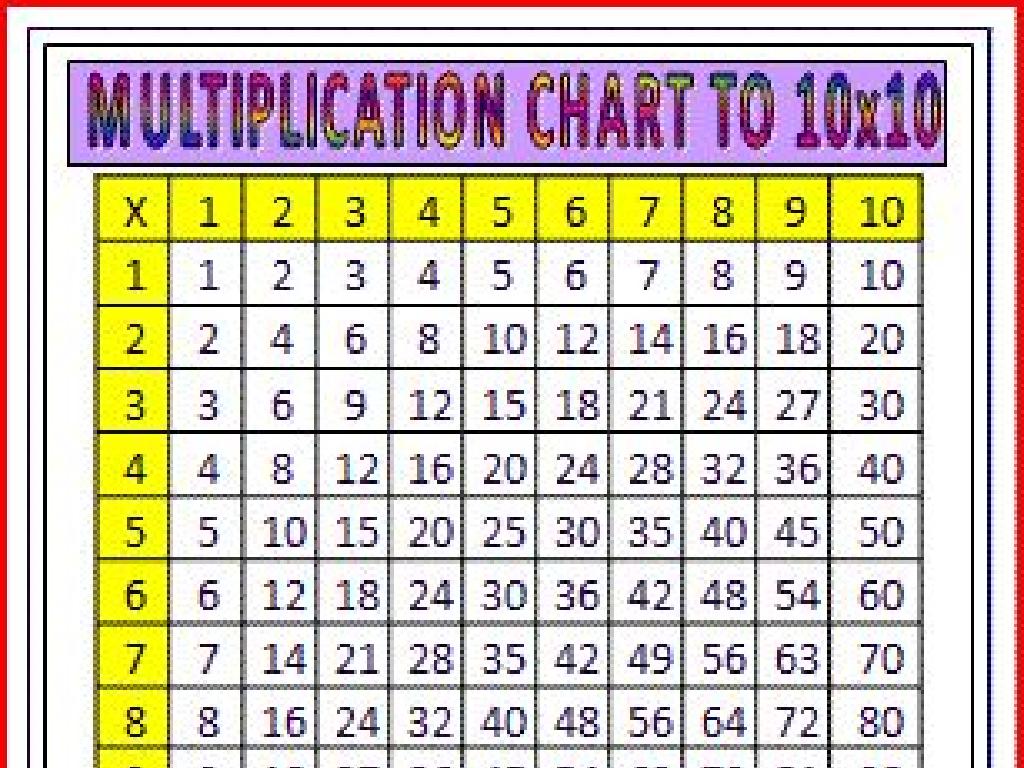Sort Common And Proper Nouns
Subject: Language arts
Grade: Second grade
Topic: Nouns
Please LOG IN to download the presentation. Access is available to registered users only.
View More Content
Welcome to Nouns!
– Greeting and topic introduction
– Definition of a noun
– Nouns are names for people, places, things, or ideas
– Examples of nouns
– Examples: ‘teacher’, ‘school’, ‘pencil’, ‘happiness’
– Class activity: Identify nouns
– Think of nouns in the classroom or at home and share them
|
Begin the class with a warm welcome and an engaging introduction to the topic of nouns. Explain that nouns are words that name people, places, things, or ideas. To make the concept more concrete, provide clear examples such as ‘teacher’ for a person, ‘school’ for a place, ‘pencil’ for a thing, and ‘happiness’ for an idea. Encourage the students to actively participate by asking them to name nouns they are familiar with from their surroundings. This activity will help students apply the concept of nouns to their everyday life and prepare them for understanding the difference between common and proper nouns in subsequent lessons.
Common and Proper Nouns
– Common nouns: general items
– Like ‘city’, ‘dog’, ‘school’
– Proper nouns: specific names
– Like ‘New York’, ‘Lassie’, ‘Lincoln High School’
– Proper nouns start with a capital
– Always use a capital letter for names
– Examples: ‘dog’ vs ‘Lassie’
|
This slide introduces the concept of common and proper nouns to second-grade students. Common nouns are general names for things, while proper nouns are specific names and always start with a capital letter. Use everyday examples that the students can relate to, and emphasize the importance of capitalization for proper nouns. Encourage students to identify nouns around them and categorize them as common or proper. You can also have them practice by writing sentences using both types of nouns.
Sorting Nouns: Common vs. Proper
– Examples of common and proper nouns
– Common: dog, city. Proper: Fido, New York
– Common nouns are general names
– Common nouns name any one of a class of person, place, or thing
– Proper nouns are specific names
– Proper nouns name a specific person, place, or thing
– Let’s sort nouns together!
|
This slide is aimed at helping second-grade students understand the difference between common and proper nouns. Start by showing examples of both types of nouns and sorting them into two distinct columns. Explain that common nouns are general names for people, places, or things (e.g., ‘teacher’, ‘school’) while proper nouns are specific names and always start with a capital letter (e.g., ‘Mrs. Smith’, ‘Lincoln Elementary School’). Engage the students by inviting them to participate in sorting a list of nouns provided by you. This interactive activity will reinforce their understanding of the concept. Make sure to provide immediate feedback to ensure they grasp why each noun is common or proper.
Practice Time: Sorting Nouns
– Receive your noun worksheet
– Sort nouns into common or proper
– Remember, proper nouns name specific things and start with a capital letter
– Work individually on this task
– Ask questions if you’re unsure
– Your teacher is here to help you!
|
This slide is for a classroom activity where students will practice sorting nouns into common and proper categories. Hand out worksheets with a list of nouns mixed together. Students should work independently to categorize each noun. Remind them that common nouns are general names for things, while proper nouns are specific and always start with a capital letter. Examples of common nouns are ‘city’, ‘dog’, ‘school’, and examples of proper nouns are ‘New York’, ‘Buddy’, ‘Lincoln Elementary School’. Encourage students to raise their hands and ask questions if they encounter any difficulties. The teacher should circulate the room to offer assistance and ensure understanding. Possible activities for different students could include sorting picture cards, using noun sorting apps on tablets, or creating their own list of nouns from a favorite book or story.
Let’s Review: Common and Proper Nouns
– Review noun definitions
– Common nouns are general names, proper nouns are specific names.
– Discuss worksheet answers
– We’ll look at our worksheets and learn from each other.
– Celebrate correct answers
– Great job on finding proper nouns like ‘Sarah’ and common nouns like ‘city’!
– Encourage everyone’s efforts
|
Begin the slide by revisiting the definitions of common and proper nouns to reinforce the students’ understanding. Common nouns are general names for people, places, or things, like ‘dog’ or ‘school’, while proper nouns name specific people, places, or things and always start with a capital letter, like ‘Fido’ or ‘Lincoln Elementary School’. Then, move on to reviewing the worksheet answers collectively, allowing students to participate and explain their reasoning. Praise the students for their efforts and correct answers to build their confidence. Emphasize the importance of trying and learning from mistakes, and encourage a supportive classroom environment where every student feels valued for their participation.
Class Activity: Noun Hunt
– Understand the Noun Hunt activity
– Search for common and proper nouns
– Write and categorize the nouns
– Use two columns in your notebook, one for common nouns, one for proper nouns
– Aim to find 5 of each noun type
|
This activity is designed to help students apply their knowledge of common and proper nouns in a fun and interactive way. Before starting, review the definitions: common nouns are general names for things (e.g., ‘dog’, ‘school’), while proper nouns name specific things and always start with a capital letter (e.g., ‘Fido’, ‘Lincoln Elementary School’). Explain the activity clearly, ensuring students understand they need to look around the classroom and identify objects or things that fit into these categories. They should write down each noun they find and decide if it is a common or proper noun, then categorize them accordingly in their notebooks. The goal is to find at least five of each type, but encourage them to find more if they can. After the hunt, students will share their findings with the class, which will reinforce their understanding and allow for a discussion on any nouns that were challenging to categorize.
Great Job, Noun Detectives!
– Congratulations, Noun Detectives!
– Why common & proper nouns matter
– Knowing the difference helps us communicate clearly.
– Stickers for everyone!
– Sneak peek: Next lesson
– We’ll explore singular and plural nouns!
|
Well done to all the students for their hard work in learning about common and proper nouns. It’s important to recognize the difference between these two types of nouns because it helps us write more clearly and understand what we read. As a reward for their participation, hand out stickers to the class. This positive reinforcement will encourage them to continue participating and learning. Finally, give them a brief idea of what to expect in the next lesson, where they will learn about singular and plural nouns, building on their understanding of noun classification.





